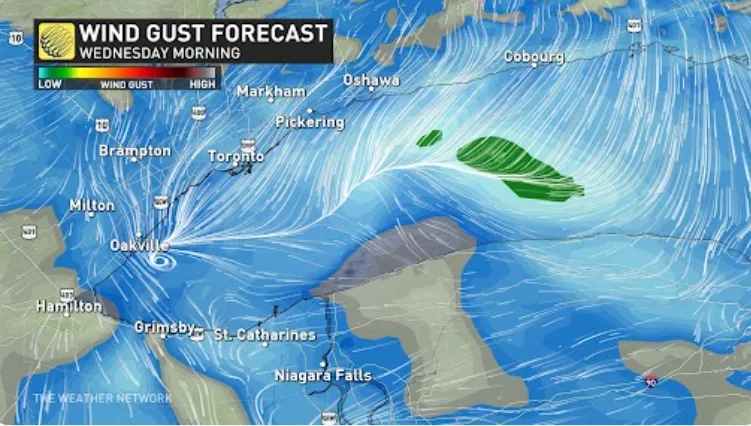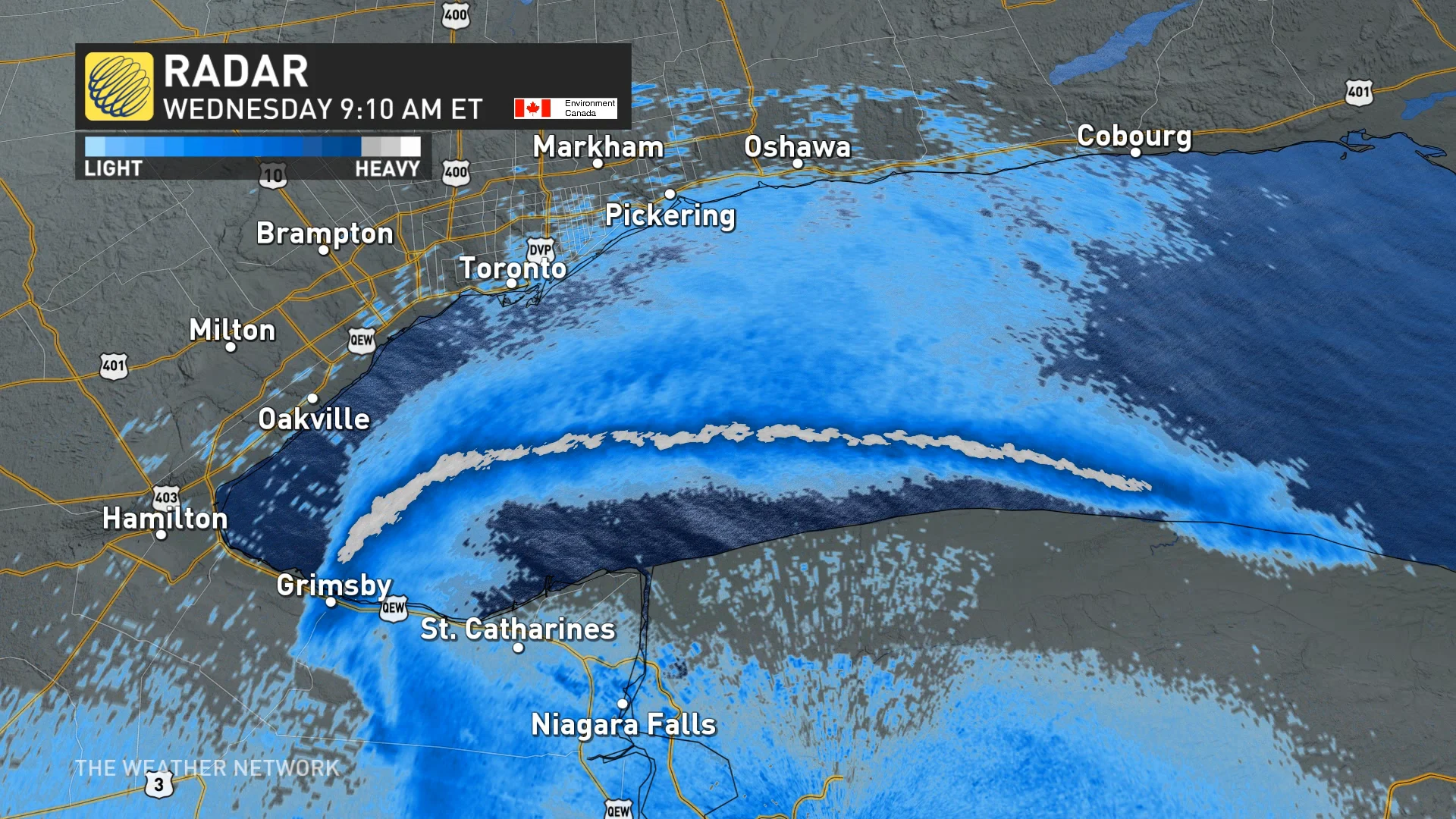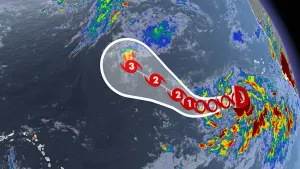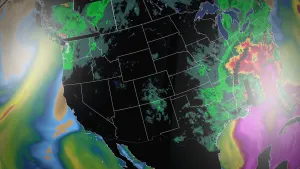
Why Ontario’s ‘snow snake’ caught many–including forecasters–off guard
The powerful band of snow that blanketed parts of the Lake Ontario shoreline on Wednesday came as a surprise to both residents and forecasters.
Wednesday’s powerful band of snow over Lake Ontario surprised some residents south of the lake—and even forecasters themselves. This sudden ‘snow snake’ covered a small section of the QEW with heavy snow while nearby communities saw sunny skies. Weather forecasts have improved tremendously over the years, but there are still some events that can catch us by surprise. Here’s why the heavy snow popped up without much notice.
HOW THE ‘SNOW SNAKE’ FORMED
We saw a single, potent band of lake-effect snow form over Lake Ontario on Wednesday morning. The band developed as a result of winds blowing in from the northern and southern shores of the lake.

These winds converged near the middle of the lake, forcing air to quickly rise and create the ‘snow snake’ that was a marvel to watch on weather radar.
The western edge of the band curled up as a result of a mesolow—a tiny centre of low pressure—and that curl is what pushed heavy snow ashore between Stoney Creek and Grimsby.
SEE ALSO: Valentine's Day gifts for the weather lover in your life
The snow squall that blanketed these shoreline communities on Wednesday feels so strange because it is strange for impactful weather events to take us by surprise these days. Modern weather forecasts are impressively accurate, right down to the precise temperature and amount of precipitation that falls at any given spot.
Meteorologists can nail down big storms days before they even form, but there are still smaller weather events that are downright difficult to forecast with precision.
SMALL-SCALE WEATHER SYSTEMS CAN BE ELUSIVE
The sheer size of large-scale weather systems like hurricanes and bomb cyclones can make those storms easier to predict.
RELATED: Why those weather model maps you see on social media are probably bogus
Forecasters pinpointed Hurricane Ida’s path into southeastern Louisiana in August 2021 while the fledgling system was still getting its act together over the Caribbean Sea. Earlier this month, we knew that a big snowstorm was in the cards for Ontario and Quebec back when the system was a mere Saskatchewan screamer several days and thousands of kilometres away.
However, the localized nature of small-scale events like summertime thunderstorms and bands of lake-effect snow makes these features harder to predict.
LAKE-EFFECT SNOW IS SIMILAR TO THUNDERSTORMS
A single pop-up thunderstorm on a summer afternoon can get its start with warm air rising over the hot streets of a neighbourhood, for instance, a detail that’s just too fine for weather models to pick up. Onshore lake breezes are another seemingly random trigger for these garden-variety thunderstorms. That’s why your forecast often shows a chance of thunderstorms on a muggy afternoon, but can’t promise exactly where those storms will fire up.
We can run into a similar situation during the winter months when the lake-effect snow machine is roaring over the Great Lakes. Lake-effect snow is a form of convection, after all, which is why communities can endure thundersnow during the heaviest bands of snow rolling off the lakes.

The subtle conditions behind the formation of Wednesday’s ‘snow snake’ were fine enough to largely evade detection until it was too late. It was a beautiful, if not chilly, day across the region. But there was just enough rising air over Lake Ontario to induce the lake breezes needed to create that impressive band of snow.
Weather forecasts are better today than they’ve ever been. Even so, those smaller features can sometimes still catch us off guard. Whether it’s the heart of winter or the dog days of summer, it’s important to be ready for hazardous weather so you’re never unprepared when you’re caught by surprise.
Subscribe to 'This Day in Weather History': Apple Podcasts | Amazon Alexa | Google Assistant | Spotify | Google Podcasts | iHeartRadio | Overcast










